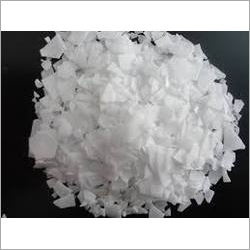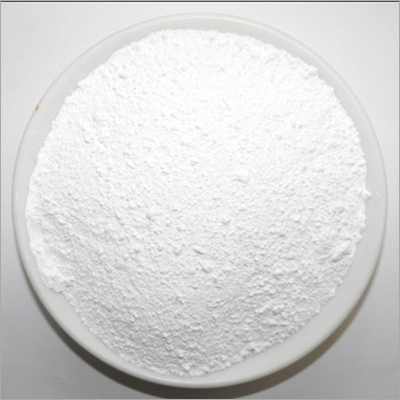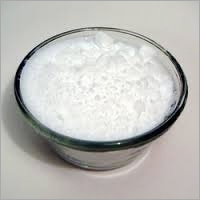Call Us : 08045816053
Polyethylene Wax
Product Details:
X
Polyethylene Wax Price and Quantity
- 25 Kilograms
Polyethylene Wax Trade Information
- Cash in Advance (CID)
- 7 Days
- Yes
- Free samples are available
- Plastic Bags / Paper Bags
- Australia Eastern Europe Middle East Africa Central America South America Western Europe Asia North America
- All India
- ISO 9001:2008
Product Description
Polyethylene Wax is a low molecular weight polyethylene polymer that has wax like physical features. We are a prominent supplier of the same for our clients. It has higher melting point and is relatively harder in comparison to paraffin wax. It is available in many forms such as a atomized powder, prills or flakes. It is demanded at various places depending upon the requirements of our patrons. We offer this wax at highly pocket- friendly prices in the market.
Polyethylene Wax Properties:
- Density : 0.95 to 0.92 G/Gm
- Melting Point : 100 -105 Degree Centigrade
- Purity : 99.99 %
- Color : White
- Form : Solid
- Grade : Industrial
Polyethylene Wax Applications:
Polyethylene wax is a versatile product that finds applications in various industries. Here are some common applications of polyethylene wax:
1. Coatings and Polishes: Polyethylene wax is widely used in the formulation of coatings and polishes. It provides a protective layer, enhances gloss, improves scratch resistance, and imparts a smooth feel to surfaces. It is used in coatings for wood, metal, paper, and plastic materials.
2. Printing Inks: Polyethylene wax is used as an additive in printing inks to improve rub resistance, gloss, and slip properties. It helps prevent scuffing and sticking of printed materials.
3. Plastics and Masterbatches: Polyethylene wax is incorporated into plastic formulations and masterbatches to improve processability, reduce friction, enhance surface appearance, and provide release properties. It acts as a lubricant during processing and helps prevent melt fracture and die build-up.
4. PVC Stabilization: Polyethylene wax is used as an external lubricant and processing aid in the production of polyvinyl chloride (PVC) products. It helps improve fusion, flow, and release properties during PVC processing and prevents the formation of surface defects.
5. Adhesives and Sealants: Polyethylene wax is added to adhesives and sealants to modify their rheological properties, improve hot tack and peel strength, and enhance open time. It helps reduce blocking and improves the overall performance of the adhesive or sealant.
6. Rubber and Tire Industry: Polyethylene wax is used as a lubricant and processing aid in the rubber and tire industry. It facilitates the mixing of rubber compounds, improves extrusion properties, reduces stickiness, and enhances surface finish.
7. Textiles and Nonwovens: Polyethylene wax finds application in the textile industry as a lubricant and anti-static agent. It is used in fiber spinning, fabric finishing, and nonwoven production processes to reduce friction, enhance processability, and impart surface smoothness.
8. Candle Manufacturing: Polyethylene wax is commonly used in the production of candles. It helps improve the burn characteristics, hardness, and surface appearance of the candles. It also reduces dripping and enhances fragrance retention.
9. Paper and Packaging: Polyethylene wax is added to paper coatings and packaging materials to improve slip, moisture resistance, and printability. It helps reduce friction, enhances surface smoothness, and prevents blocking of paper sheets or packaging films.
10. Personal Care Products: Polyethylene wax is used in various personal care products, such as lipsticks, creams, lotions, and hair care formulations. It provides viscosity control, emollient properties, and a smooth texture to the products.
Frequently Asked Questions:
Q: What is polyethylene wax?
A: Polyethylene wax is a type of synthetic wax derived from the polymerization of ethylene monomers. It is produced through various processes, such as high-pressure polymerization, low-pressure polymerization, or by the thermal cracking of polyethylene.
Q: What are the different types of polyethylene wax?
A: Polyethylene wax can be classified into several types based on their molecular weight and properties. The common types include low-density polyethylene (LDPE) wax, high-density polyethylene (HDPE) wax, oxidized polyethylene wax, and micronized polyethylene wax.
Q: What are the properties of polyethylene wax?
A: Polyethylene wax typically has a low melting point, ranging from 100 to 140 degrees Celsius, depending on the type. It has a high hardness, good thermal stability, low viscosity, low toxicity, and excellent slip and anti-blocking properties.
Q: How is polyethylene wax used in industry?
A: Polyethylene wax finds applications in various industries. It is used as a lubricant, dispersing agent, release agent, and processing aid in the production of coatings, inks, plastics, PVC products, adhesives, sealants, rubber compounds, textiles, candles, paper, and personal care products.
Q: What are the benefits of using polyethylene wax?
A: The use of polyethylene wax provides several benefits. It improves the processability of materials, enhances surface appearance, reduces friction and wear, provides release properties, increases gloss, improves scratch resistance, and imparts a smooth texture. It also helps prevent blocking, sticking, and scuffing of surfaces.
Q: How is polyethylene wax applied in coatings and polishes?
A: In coatings and polishes, polyethylene wax is usually incorporated as an additive. It can be dispersed in a solvent or melted and mixed with other coating components. It forms a protective layer when applied on surfaces and enhances gloss, smoothness, and scratch resistance.
Q: Is polyethylene wax environmentally friendly?
A: Polyethylene wax is generally considered to be environmentally friendly. It is non-toxic, non-hazardous, and biologically inert. However, as with any chemical product, proper handling, disposal, and adherence to local environmental regulations are important.
Q: Can polyethylene wax be recycled?
A: Yes, polyethylene wax can be recycled. It can be reprocessed and reused in various applications. Recycling methods can include melting, filtration, and purification processes.
Q: Where can I purchase polyethylene wax?
A: Polyethylene wax is available from chemical suppliers, distributors, and manufacturers. It can be purchased in various forms, such as flakes, granules, pastilles, or powders.
Q: Are there any safety considerations when working with polyethylene wax?
A: When working with polyethylene wax, it is important to follow standard safety precautions. This includes wearing appropriate protective equipment, such as gloves and goggles, ensuring proper ventilation in the workspace, and handling the material in accordance with the manufacturer's guidelines.
Enter Buying Requirement Details
 English
English Spanish
Spanish French
French German
German Italian
Italian Chinese (Simplified)
Chinese (Simplified) Japanese
Japanese Korean
Korean Arabic
Arabic Portuguese
Portuguese




